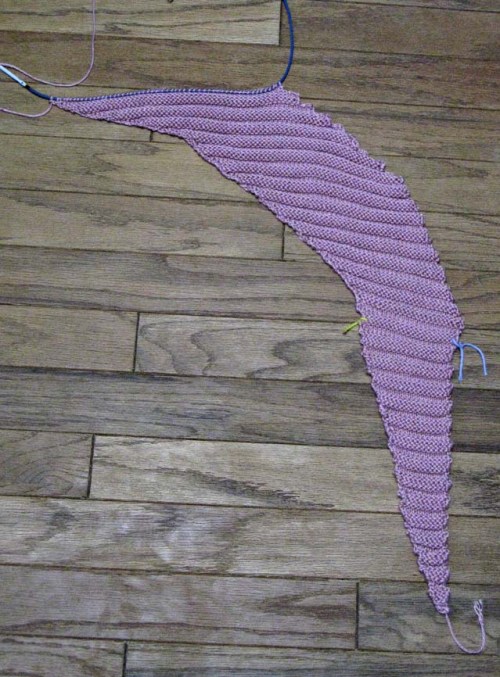First, you don’t need to. 🙂 Drafts are for more complicated looms with shafts, and the instructions in patterns for rigid heddle weaving are usually just written in text. You can ignore the little drawings. However, if you are like me and curious about it anyway because you found that great free resource online for weaving drafts, (third link below – these used to be free, now you just get a little picture), here is some very basic info to help you out.
There’s no reason to go over what has been said before, so I refer you to this blog where the basics of reading them have already been explained, then I will elaborate:
After reading this page, I understood way more than before, but still needed a little more help.
After finding this example below, it all became clear. This is the weaving draft drawing for your typical checkerboard, (which, if you have a loom, you have probably already made without needing a chart). You would get this by warping alternating blocks of 2 different colors. 4 strands blue (using both slots and holes), 4 strands white, repeat. Then when you weave the weft, 4 “picks” (or rows), one color, 4 picks the other color, repeat. This is what that looks like. The top bar is the order of the warp threads, the right-most bar is the map of the weft threads.
So you can see from this, you warp your loom following the skinny line at the top with blue and white. It tells you 4 blue, 4 white, (putting one thread through each slot and each hole), repeat. The skinny line at the right tells you the order for the weft (4 white, 4 blue, repeat). Now look at the black and white blocks below and to the left of the skinny lines. The bellwether told you that this is the number of strands and that one row can be slots and one row holes. So whenever you have a draft that looks like this one with only two rows, with one black block and one white block alternating in a single checkerboard, this tells you that you only need one strand of yarn in each slot and one in each hole, (how you would normally thread your rigid heddle loom). So when looking at a draft, if you see that, you know you can now then ignore all of the checkerboards. Just warp across, following the colors in the skinny line at the top, putting them in both slots and holes, in order.
Here is a resource for drafts, it used to give you them for free when you searched the library, but not anymore. Still, here’s this link in case you want to look at weaving samples.
http://www.handweaving.net/Patterns.aspx
If you find a draft that has 2 rows, (so you know you can do it on your rigid heddle), but it has more than one black block or white block in a row, this is going to get more complicated. You would need more than one strand in a hole or slot. (This is also what Ask the Bellwether was talking about. As she mentions, you will have to keep in mind how thickly packed you want your fabric to get, and you may want a heddle with more or less spaces per inch.)
The Weaver’s Idea Book by Jane Patrick – highly recommend it! (I think i’ve mentioned it in every weaving post.) She shows you MUCH that you can do without you needing to know how to read a draft. The book is not really about drafts, and I haven’t played with doing anything from a draft that is more complicated than a plain weave (like the checkerboard). There are text written instructions in the book for doing things with pick up sticks and textures, so nothing complicated about it. So, I can’t say any more about drafts, as I really have not wrapped my brain around it more than what I’ve said above. But hopefully this information helps you get the beginnings of understanding drafts if you are interested.
My wall hanging of some of Jane Patrick’s weaving textures from the book.




